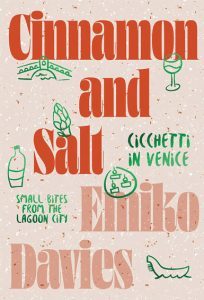Carpaccio Alla Cipriani (Cipriani’s Carpaccio)
Emiko Davies

Serves
2 as a light lunch or 3 - 4 as antipastoIngredients
| 200g beef fillet | |
| 2 egg yolks | |
| 1 tablespoon lemon juice | |
| 200ml extra virgin olive oil | |
| ½ teaspoon Dijon mustard | |
| white pepper, to taste | |
| ½ teaspoon worcestershire sauce | |
| 1 tablespoon full-cream (whole) milk, or as needed |
Sometime in June 1950, this dish was invented by Giuseppe Cipriani of Harry’s Bar for his friend and favourite client, the well-known Venetian countess Amalia Nani Mocenigo, who (as the story goes) had been put on a strict diet by her doctor. It included having to avoid cooked meat (there are many different stories as to why this may have been, low red blood cells being one of them, but her granddaughter Barbara Garavelli Nani Mocenigo recounts on her blog that her mother always explained nonna had been poisoned by an anchovy and could never eat cooked meat again). So, the countess couldn’t order her usual entrecôte, but Giuseppe instead prepared a lean dish of raw prime beef, in the thinnest slices, with a light mayonnaise spiked with mustard and worcestershire sauce. It has been a classic ever since. It was named after the Renaissance Venetian painter (as Cipriani is fond of doing) Vittore Carpaccio, who studied under Bellini.
View the recipe collection here
Instructions
| 1. | To prepare the beef, make sure it is cleaned of any connective tissue and fat (trim it away if not) so you are left with just the lean meat. |
| 2. | Put the fillet in the freezer for 30 minutes so that it is nice and firm. In the meantime, you can prepare the sauce. |
| 3. | Blend the yolks with a pinch of salt and the lemon juice with a hand blender and slowly add the olive oil in a thin stream until it is incredibly creamy and very thick – you may not need it all. |
| 4. | Stir through (and adjust to your taste), the mustard, some white pepper, worcestershire sauce and some milk to loosen the sauce to your liking. You may even like to add more lemon juice or more salt. Set aside. |
| 5. | Remove the fillet from the freezer and slice into 3mm slices with a very sharp knife, then flatten the slices using the flat side of the knife’s blade, using a bit of pressure until you flatten them to about 1–2mm thin. This will result in neater, more compact slices than if you batter them with a meat mallet. |
| 6. | Scatter salt over the top (place the salted meat in the fridge to keep well chilled until needed if not serving right away), then serve the carpaccio with the sauce drizzled over the top. |
| 7. | You can also put the sauce in a squeeze bottle so you can decorate the dish ‘Kandinsky style’ as they like to do in Harry’s Bar, in a sort of criss-cross pattern. |
| 8. | NOTE You could easily make this into more of a cicchetto by placing small slices of beef onto toasted bread crostini with a drizzle of the sauce over the top. |
| 9. | This makes plenty of sauce, you won’t need it all, and if using a hand blender or similar you will find it hard to make this mayonnaise in a smaller quantity – but the bright side is that it is absolutely delicious and you will want to eat it with everything you can. It’s perfect with fish, with vegetables, and on sandwiches too. |
| 10. | It goes without saying that you should use the best-quality beef you can afford. |
 This is an edited
This is an edited
extract from Cinnamon
& Salt by Emiko
Davies, published by
Hardie Grant Books,
RRP $45. Available
in stores nationally.
Photography:
©Emiko Davies
